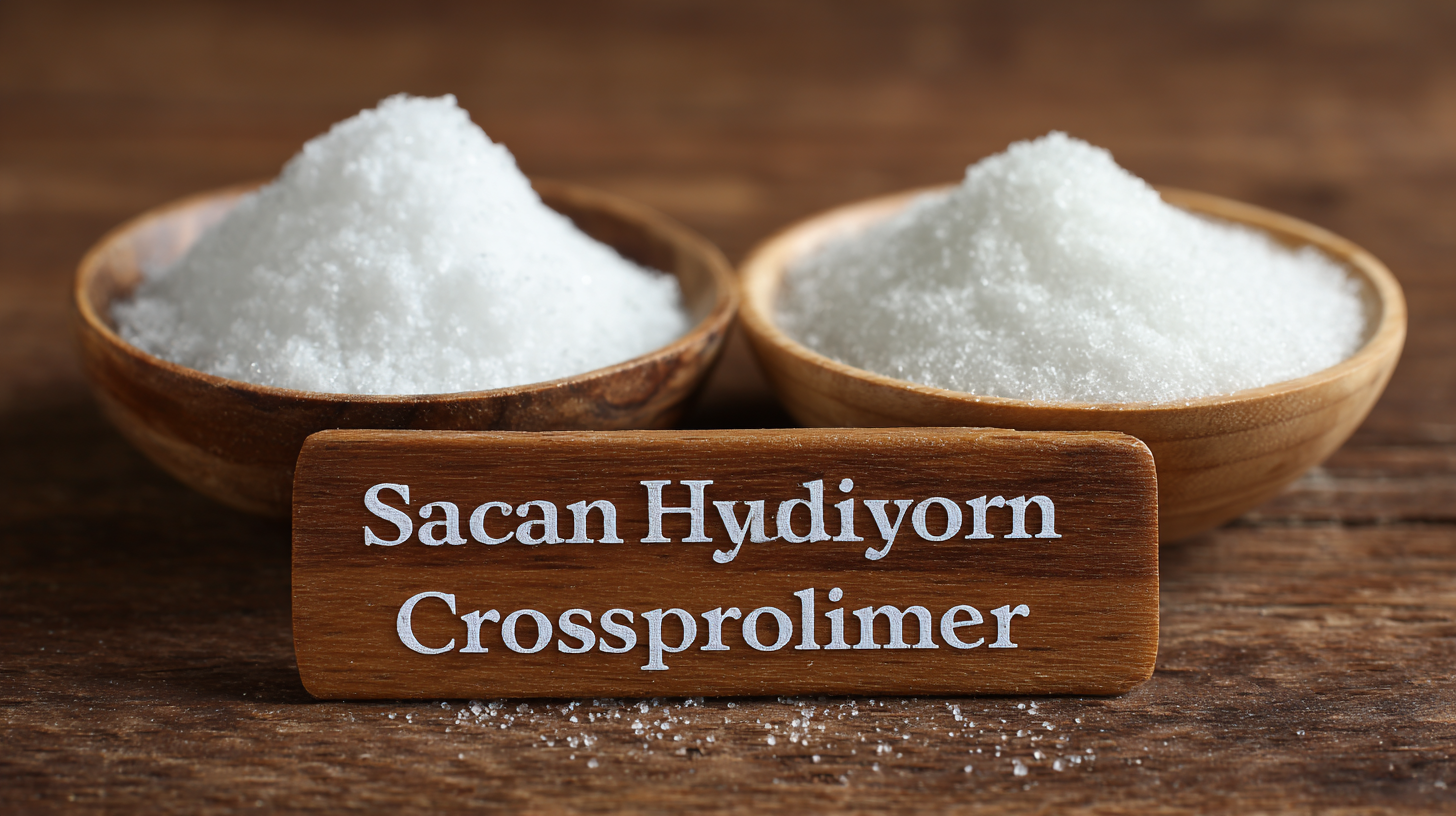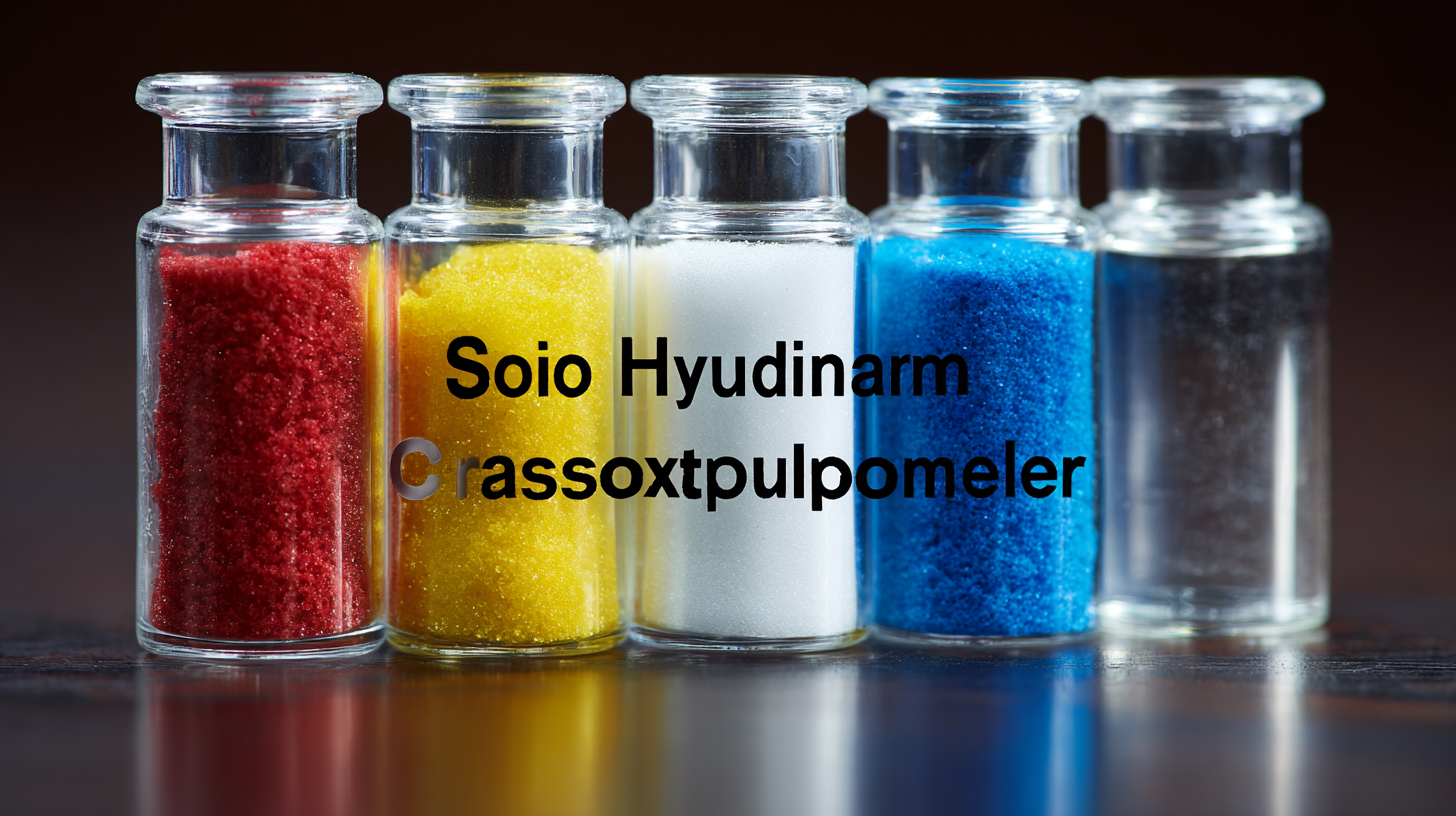
A Comprehensive Comparison of Best Sodium Hyaluronate Crosspolymer Options for Global Buyers
 In the ever-evolving world of skincare and cosmetic formulations, Sodium Hyaluronate Crosspolymer has emerged as a pivotal ingredient, renowned for its exceptional moisture-retaining properties and versatility. According to recent industry reports, the global market for hyaluronic acid and its derivatives, including Sodium Hyaluronate Crosspolymer, is projected to reach approximately $11 billion by 2025, highlighting a growing demand among consumers and manufacturers alike. This crosspolymer not only enhances product efficacy through improved skin absorption, but also contributes to long-lasting hydration, thereby addressing various skin concerns. As buyers navigate the plethora of options available, understanding the differences and applications of the best Sodium Hyaluronate Crosspolymer formulations becomes critical, ensuring they make informed decisions that cater to their specific needs and preferences in the competitive beauty landscape.
In the ever-evolving world of skincare and cosmetic formulations, Sodium Hyaluronate Crosspolymer has emerged as a pivotal ingredient, renowned for its exceptional moisture-retaining properties and versatility. According to recent industry reports, the global market for hyaluronic acid and its derivatives, including Sodium Hyaluronate Crosspolymer, is projected to reach approximately $11 billion by 2025, highlighting a growing demand among consumers and manufacturers alike. This crosspolymer not only enhances product efficacy through improved skin absorption, but also contributes to long-lasting hydration, thereby addressing various skin concerns. As buyers navigate the plethora of options available, understanding the differences and applications of the best Sodium Hyaluronate Crosspolymer formulations becomes critical, ensuring they make informed decisions that cater to their specific needs and preferences in the competitive beauty landscape.
Key Applications of Sodium Hyaluronate Crosspolymers in Various Industries
Sodium hyaluronate crosspolymers have gained significant traction across various industries due to their versatile applications and unique properties. In the cosmetics sector, these crosspolymers are prized for their ability to retain moisture and enhance skin elasticity. Commonly found in serums and moisturizing creams, they effectively form a protective barrier, promoting hydration and improving overall skin texture. Their high biocompatibility also makes them suitable for sensitive skin formulations, driving their demand in beauty products.
In the medical field, sodium hyaluronate crosspolymers play a critical role in various therapeutic applications. They are used in ocular surgeries to maintain moisture in the eye and prevent surface abrasion. Additionally, their viscoelastic properties are harnessed in joint injections for pain relief in conditions like osteoarthritis, providing both lubrication and cushioning to the affected joints. Beyond cosmetics and healthcare, these versatile materials are being explored in the food industry for their emulsifying and stabilizing capacities, enhancing product texture and shelf life. These crosspolymers continue to demonstrate their multifaceted utility, contributing to innovations across multiple sectors.
A Comprehensive Comparison of Best Sodium Hyaluronate Crosspolymer Options for Global Buyers
| Crosspolymer Type | Molecular Weight (kDa) | Viscosity (cPs) | Primary Application | Industry |
|---|---|---|---|---|
| Sodium Hyaluronate A | 800 | 150 | Dermal Fillers | Cosmetics |
| Sodium Hyaluronate B | 1000 | 200 | Ophthalmic Solutions | Healthcare |
| Sodium Hyaluronate C | 500 | 100 | Joint Injection | Pharmaceuticals |
| Sodium Hyaluronate D | 1200 | 250 | Tissue Engineering | Biotechnology |
| Sodium Hyaluronate E | 900 | 175 | Wound Healing | Medical Devices |
Challenges Faced by Manufacturers in Sodium Hyaluronate Crosspolymer Production
The production of sodium hyaluronate crosspolymer presents various challenges that manufacturers must navigate to meet the growing demand in global markets. One of the most significant hurdles is maintaining consistent quality in the final product. Variations in raw material sourcing and processing methods can lead to discrepancies in molecular weight and purity levels, affecting the performance characteristics of the crosspolymer. Manufacturers need to implement stringent quality control measures and employ advanced analytical techniques to ensure that their products meet the industry standards.
Additionally, regulatory compliance poses a significant challenge for sodium hyaluronate crosspolymer producers. Different countries have varying regulations regarding the use of biopolymers in cosmetic and pharmaceutical applications, which can create barriers to market entry. Manufacturers must be well-versed in these regulations to avoid costly delays and potential fines. Furthermore, the sustainability of sourcing hyaluronic acid, particularly from animal-derived sources, adds another layer of complexity. As consumers become more environmentally conscious, the demand for plant-based or synthetic alternatives is on the rise, pushing manufacturers to innovate their production processes while balancing cost and efficiency.
Comparative Analysis of Market Leading Sodium Hyaluronate Crosspolymer Brands
In the ever-evolving landscape of cosmetic and pharmaceutical applications, Sodium Hyaluronate Crosspolymer has emerged as a frontrunner due to its superior hydrating and skin-rejuvenating properties. This comparative analysis delves into the leading brands available in the market, examining their unique formulations, efficacy, and suitability for various skin types. Each brand harnesses the power of Sodium Hyaluronate in a distinct manner, catering to a diverse range of consumer needs.
For instance, Brand A focuses on high molecular weight crosspolymers, offering enhanced moisture retention and elasticity, making it an ideal choice for mature skin. In contrast, Brand B leverages a blend of low and high molecular weight crosspolymers, ensuring deep hydration while also addressing finer lines and skin texture issues.
The analysis extends beyond just the formulas, considering additional factors such as sourcing, sustainability practices, and clinical evidence supporting each brand's claims. These attributes not only highlight the commitment to quality but also guide buyers in making informed choices based on their specific skincare goals and ethical considerations.
Innovative Solutions for Overcoming Sodium Hyaluronate Crosspolymer Issues
Sodium hyaluronate crosspolymers have gained significant traction in various industries, notably in cosmetics and medical applications, due to their unique properties, such as enhanced moisture retention and biocompatibility. However, the market faces challenges such as formulation stability and cost-effectiveness. According to a recent report by Grand View Research, the global hyaluronic acid market is projected to reach $13.5 billion by 2028, driven by rising consumer demand for skincare products that offer hydration and anti-aging effects. This surge underscores the necessity for innovative solutions to enhance the efficacy and affordability of sodium hyaluronate crosspolymers.

To address these issues, manufacturers are exploring advanced crosslinking technologies that improve the stability and performance of sodium hyaluronate formulations. For instance, recent studies suggest that hybrid crosslinking methods, which combine natural and synthetic polymers, can significantly enhance product longevity and durability without compromising on safety. Additionally, the integration of nano-encapsulation can facilitate targeted delivery, maximizing the therapeutic benefits of sodium hyaluronate in skincare and regenerative medicine. As the industry evolves, these innovations not only promise better solutions for existing challenges but also pave the way for new applications and enhanced consumer satisfaction.
Future Trends in Sodium Hyaluronate Crosspolymer Development and Application
The landscape of sodium hyaluronate crosspolymer development is rapidly evolving, driven by advancements in biotechnology and increasing demand across various applications. In the cosmetic industry, for instance, the focus is shifting toward creating more biocompatible and effective formulations. Researchers are exploring innovative crosslinking methods that enhance the stability and efficacy of sodium hyaluronate, leading to formulations that offer longer-lasting hydration and improved skin elasticity. This shift not only meets consumer preferences for high-performance products but also aligns with the growing trend towards clean and sustainable beauty.
Looking ahead, the pharmaceutical sector is likely to witness transformative developments in sodium hyaluronate crosspolymers. As the understanding of its biochemical properties deepens, applications in drug delivery systems are being refined. Future innovations may include targeted delivery mechanisms that utilize crosspolymers to enhance the bioavailability of therapeutic agents, thereby increasing their effectiveness while minimizing side effects. With ongoing research and development, sodium hyaluronate crosspolymers are poised to play a crucial role in the advancement of both cosmetic and medical applications, setting the stage for remarkable future trends in the field.

